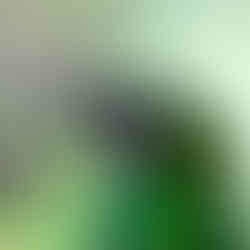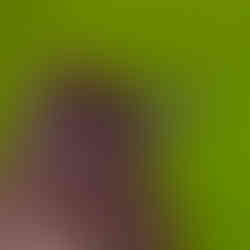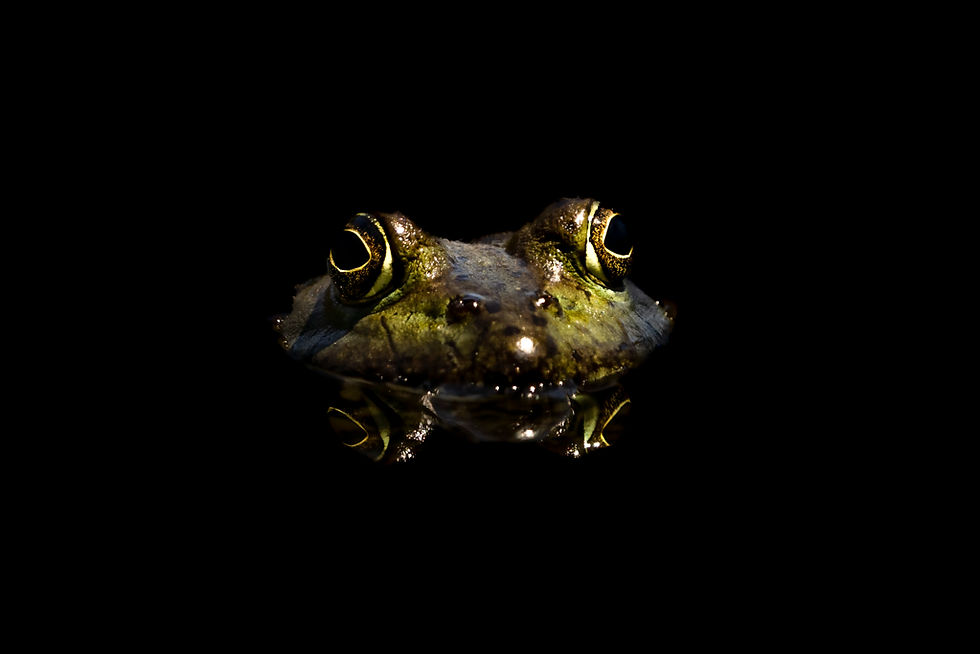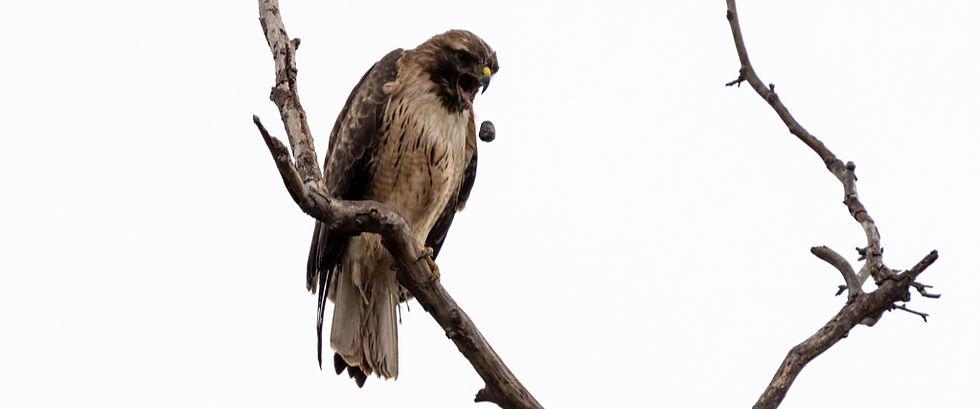Bird's-eye View: How Birds Protect Their Precious Eyes
- Dale Lauterback

- Mar 31, 2024
- 3 min read
Updated: Jul 26, 2025

Birds are renowned for their incredible ability to navigate the skies, spot prey from great distances, and perceive a vibrant world of colors. However, these aerial acrobats face numerous hazards that could potentially harm their most vital sensory organ—their eyes. To safeguard their vision, birds have evolved an array of fascinating adaptations and protective mechanisms. In this blog post, we will explore the remarkable strategies employed by our feathered friends to shield their eyes from harm.
Nictitating Membrane:
A Built-in Eye Protector One of the most remarkable defenses in a bird's ocular arsenal is the nictitating membrane, also known as the third eyelid. This transparent or translucent membrane is present in the inner corner of the eye and serves as a protective shield. When a bird is flying at high speeds or encounters debris, the nictitating membrane quickly sweeps across the eye's surface, shielding it from potential damage. This specialized membrane also acts as a moistening agent, helping to clean and hydrate the cornea.

Bony Eye Rings and Sclerotic Rings:
Certain species of birds possess bony eye rings or sclerotic rings, which provide additional reinforcement to the eyes. These bony structures encircle the eyeball and enhance its protection. The sclerotic ring, made of several interconnected bones, provides rigidity to the eye and prevents it from being crushed under the stresses of flight or during pecking motions.
Eyelashes and Eyebrows:
Nature's Tiny Shields Just like humans, some birds have evolved eyelashes and eyebrows, albeit in a modified form. These structures serve as miniature shields against wind, dust, and bright sunlight. The eyelashes help to deflect airborne particles and prevent them from directly entering the eye, while the eyebrows shield the eyes from excessive sunlight and reduce glare. They play a crucial role in maintaining clear vision during flight and various other activities.
Bill and Head Movements:
A Dynamic Defense Birds employ unique movements of their bill and head to protect their eyes. When feeding, birds often tilt their heads or move their bills in a way that minimizes the risk of debris or harmful substances from entering their eyes. They instinctively utilize their peripheral vision to detect potential threats while focusing their eyes on the primary task at hand.
Ocular Oil Gland:
In addition to these fascinating adaptations, some bird species have an ocular oil gland that produces a waxy oil. The ocular oil gland's oil has been found to contain certain compounds that can absorb UV radiation, shielding the eyes from its damaging effects. By regularly applying this oil, birds can mitigate the risk of sunburn and protect their eyes from the harmful effects of prolonged exposure to sunlight.
Did You Know:
NASA, the renowned space agency, continuously seeks innovative solutions to ensure the safety and well-being of astronauts during space exploration. Drawing inspiration from nature, scientists at NASA have looked to the ocular oil found in birds for potential applications in astronaut eye protection. By studying the properties and protective qualities of this specialized oil, NASA aims to develop advanced eye protection systems that can shield astronauts from the harsh conditions of space, including exposure to harmful radiation and intense sunlight. This exciting research not only showcases the remarkable adaptability of birds but also highlights the potential for biomimicry in creating effective and sustainable solutions for human exploration beyond our planet. By harnessing nature's wisdom, NASA strives to enhance the safety and vision of astronauts as they venture into the unknown frontiers of space. Read more about Eagle Eye Lens developed at JPL
Next time you observe a bird soaring through the sky or perched on a branch, take a moment to appreciate the incredible adaptations that allow them to protect their precious eyes. Their ability to navigate hazardous environments, spot prey, and experience the world in vivid detail is a testament to the wonders of evolution and the marvels of the natural world.
The photographs contained in this website may not be reproduced without the express consent of Shutter Bison.






















Comments